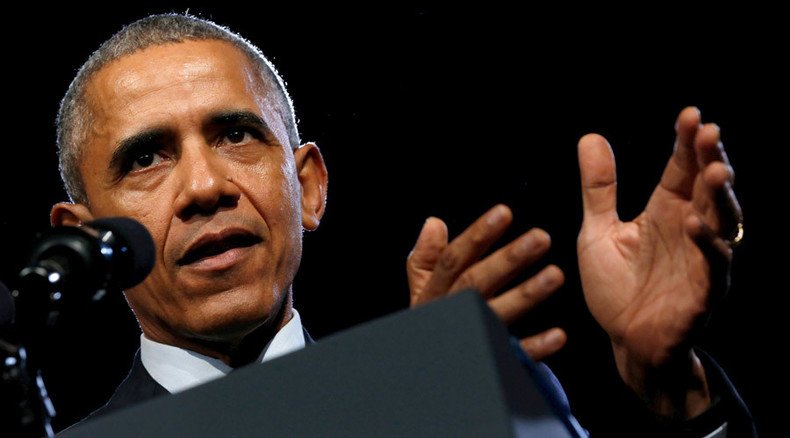Charge it: Obama signs deal to double national debt from 2009 levels

President Obama has signed a budget deal for the next two years that will raise the national debt ceiling from $18.5 trillion to $20 trillion, putting the US debt at almost twice the level it was when he first took office.
The deal passed overwhelmingly in both chambers of the Republican-controlled Congress, with the House voting 266-167 on Wednesday and the Senate approving the package 63-35 on Friday. It allows for the Treasury Department to borrow another $1.5 trillion until March 2017, two months after Obama leaves office. At that point, the country’s public debt will be around $20 trillion and the debt ceiling will need to be raised once again.
READ MORE: US Senate passes budget, debt limit bill, sends to President Obama
The deal was brokered with the help of Republican John Boehner, the former Speaker of the House who only left office on Wednesday. He said that the new increases did not represent a blow to fiscal responsibility, because the long-growing national debt was offset by $112 billion in spending cuts. Many Republicans who lean towards fiscal restraint and support a balanced budget were upset with Congress agreeing to the deal.
When President Barack Obama entered office in 2009, US debt obligations stood at around $10.6 trillion dollars. The debt currently stands at almost $18.2 trillion, and is expected to approach the newly agreed-upon limit by the time Obama leaves the White House in January 2017.
Despite the national debt undergoing an unprecedented increase of $10 trillion during the Obama presidency, administration officials had previously criticized President George W. Bush for roughly doubling the national debt with a much smaller increase. When Bush took office, the country was facing debt obligations of $5.8 trillion dollars, and it increased by about the same amount by the time his second term was up.
"We've added, in the last eight years, $4 trillion of debt to the nation's obligations,” former White House Chief of Staff Rahm Emanuel said on "Meet the Press" in 2009, just before Obama took office.
READ MORE: US budget deal could mean fast passage of defense bill aiding Syrian rebels, Ukraine
The national debt stood at $4.4 trillion in 1993, when Obama’s fellow Democrat Bill Clinton took office. Over his two terms, Clinton increased the debt by roughly 32 percent, or $1.4 trillion.
Though the debt increase under Obama has been by far the largest in dollar terms in US history, it falls short of the percentage increase that was seen under President Ronald Reagan. Inheriting a $998 billion debt from Jimmy Carter in 1981, Reagan left it at $1.86 trillion in 1989, an increase of 186 percent.












